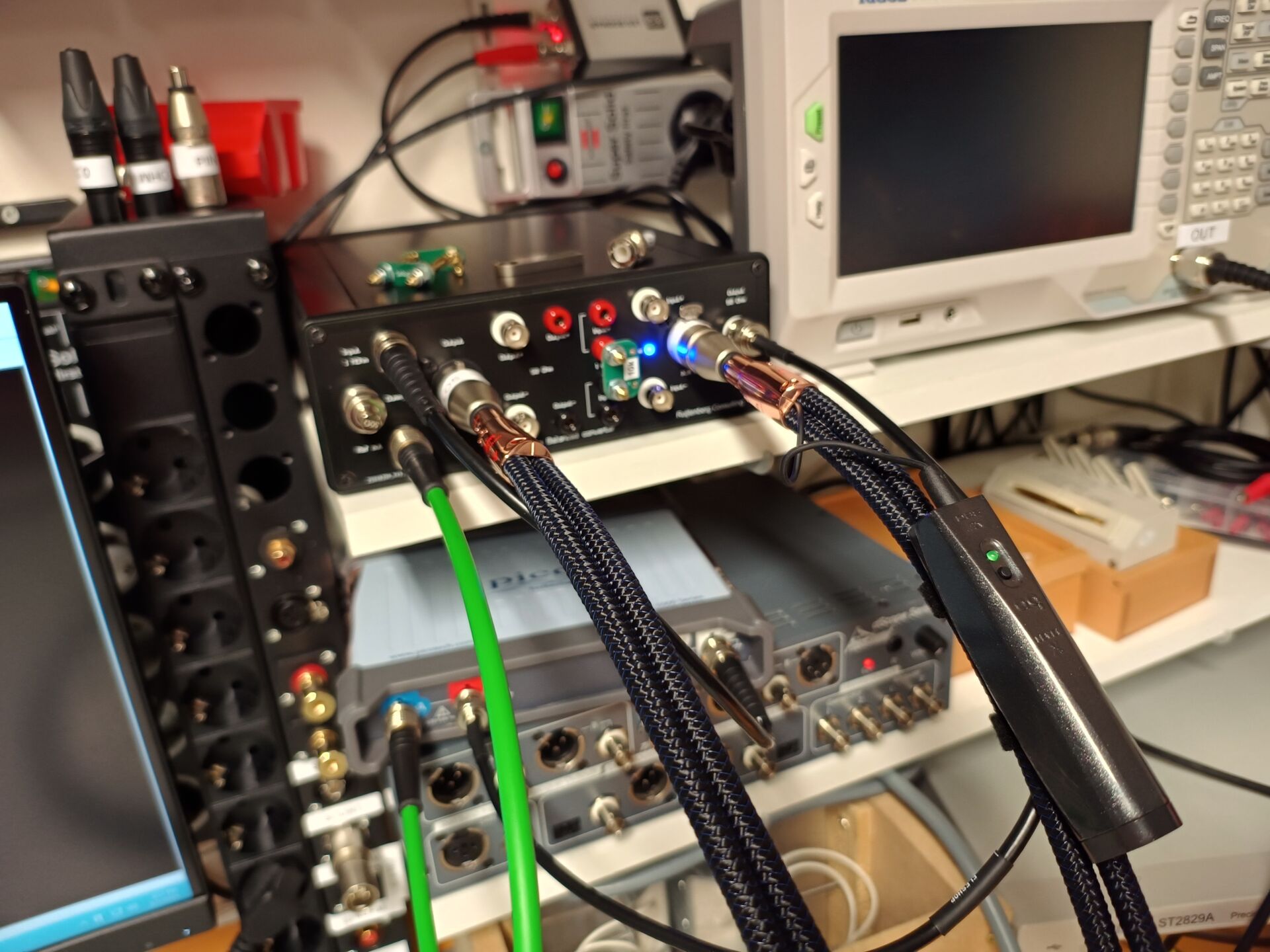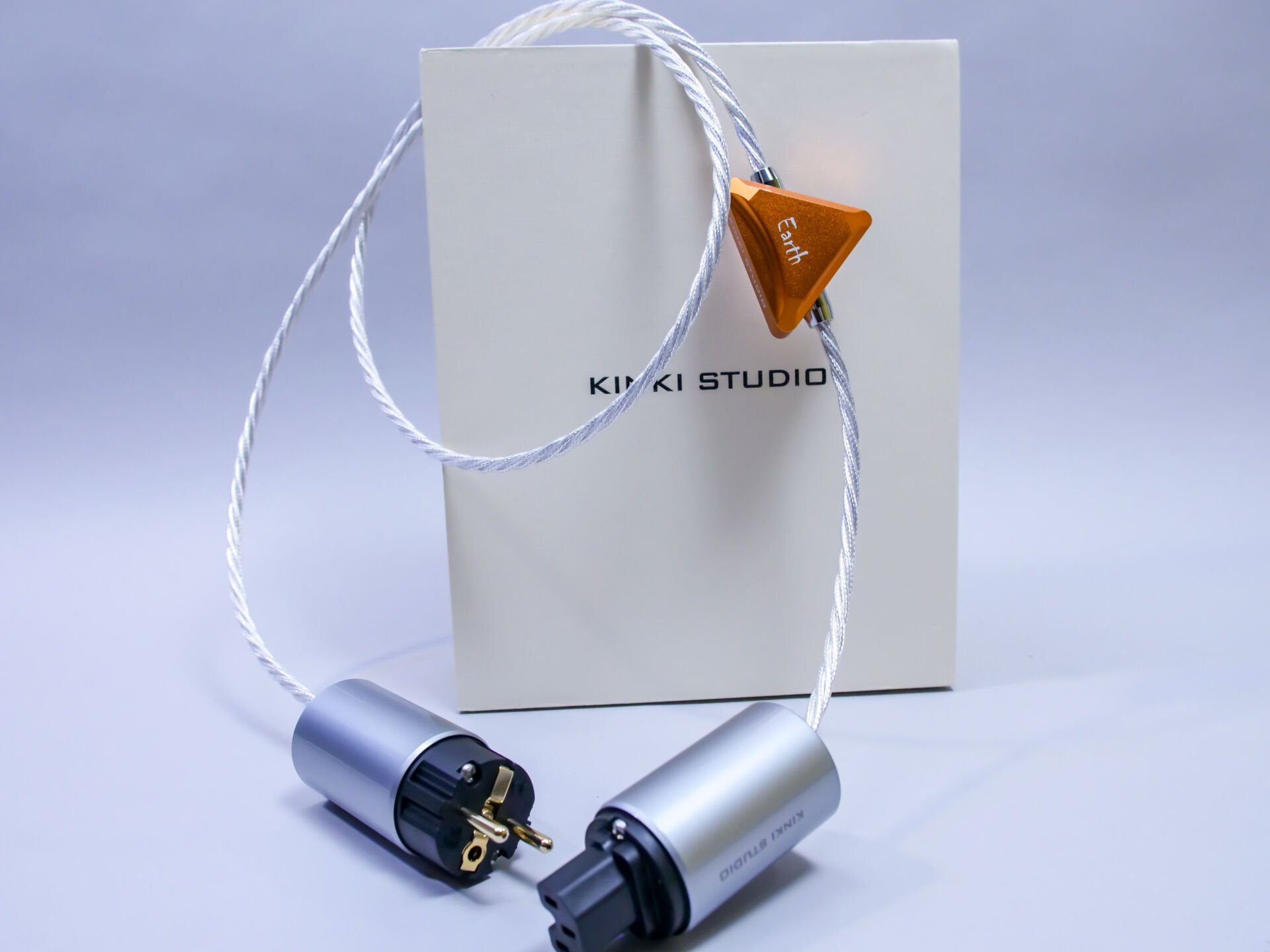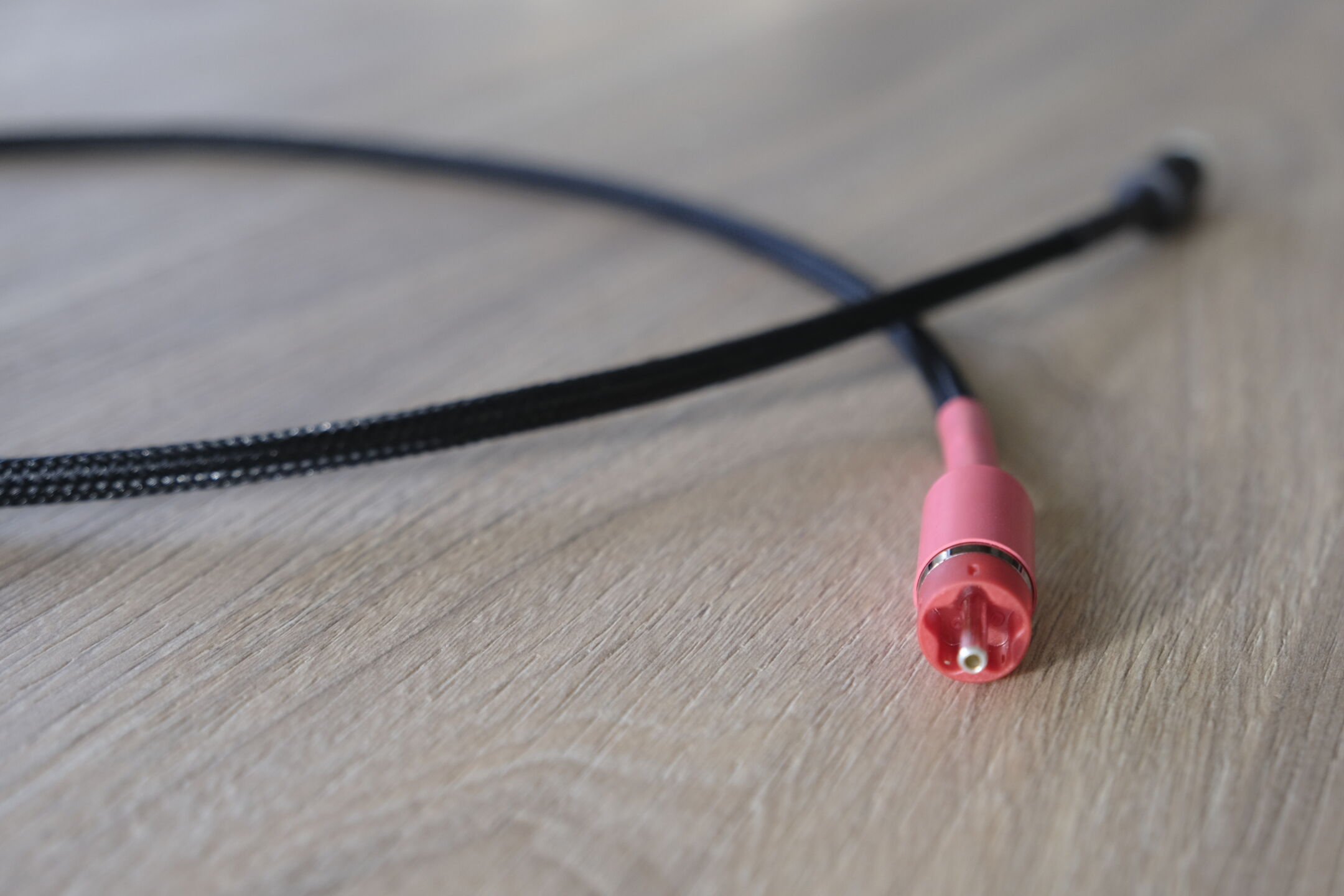

Intro
Contents
We get a lot of questions at Alpha Audio. Either via mail, or via the response option in articles, and the forum. Very nice of course, because that way we know what’s going on among the readers! So keep asking questions: that’s what we’re here for. This time we tackle the cable issue!
Hifi is a nice hobby. A hobby that requires a surprising amount of knowledge. Just think about it: acoustics, psychoacoustics, electrical engineering, mechanics, digital transmission… PC’s… In fact, everything comes together in our hobby. And that makes it tough to do everything right. So it’s not surprising that manufacturers specialise.
Transmitting signals
Unless you are listening to an all-in-one speaker with a battery, cables are required to transfer signals from one component to another. Those signals can be analog in nature, or digital. Although the electrical signal in a digital cable is in fact analog. It’s a square wave, but still… a rise time of 0 does not exist. And so it’s always a bit of a sinus… you’re already catching him.
Here we do have the biggest and easiest dichotomy: there are cables for digital and cables for analogue signals. We’ll put the power cords under analog for a moment. Although there are also power cords, especially for digital devices. Shunyata has it. By the way, this has mainly to do with filtering.
Tuning with cables
Okay. digital and analogue cables. Before we continue with the breakdown of these two segments, we would like to give one important piece of advice:
Never compensate errors or annoyances in the sound with cables. That’s an endless, impossible journey.
What you can do is put a fine dot on the ‘i’. Look for a little more space. Fine. That’s okay. Look for a little more peace and quiet. You can do that, too. But: I’ve got too much and too flubbery low… No: that’s not in cables and cables are never going to solve that. In that case, first try the acoustics or another speaker/amplifier combination.
Now that that’s out of the way: time for some clarity.
Analogue
Within the analogue domain we can start with the beginning: energy. Many enthusiasts forget that a power cord is part of the set. And that a power cord also has an audible influence. Colleague Hans Beekhuyzen reports aptly that this should also be the starting point. And we completely agree. Start with proper power cords if you haven’t done anything about cables yet.
When you have the power supply in order, you can start with the interlinks. In fact, there are two types: balanced and single-ended. Which one is suitable for your set is of course entirely dependent on the components and their construction. If you have a system that is completely balanced, we usually recommend balanced interlinks. Our experience is that it gives a little more peace of mind in the display.
Balanced interlinks are also called XLR cables. However, this is not entirely correct. It’s an XLR connector. And these are also used with other cables. Think of the digital AES connection. More on that later.
Apart from interlinks, there are of course speaker cables. Our most important advice: keep them equal in length and as short as possible. Long cables have a negative influence on the damping factor. And different lengths are not conducive to playback.
It is also our experience that a loudspeaker cable does have a very audible influence on the reproduction; the influence is less than mains cables and interlinks.
Digital
Digital is digital: a 1 and a 0, right? Yeah. That’s right. And when they arrive, it works, right? Wrong. It depends entirely on the situation. Spdif is extremely sensitive to jitter. If you have an optical cable where the connection is just not good, then reflection or scattered light can occur. The result is a less tight signal. It may work, but a lot of error correction may be needed on the receiving side. The same goes for ordinary spdif cables with a cinch connector. They’re rarely 75 ohms, which is the specification. If the terminating impedance is not correct, errors occur again. AES suffers less from this, but can also suffer from EMI or RFI. Shielding can help there.
With package based audio – think of USB and ethernet – data is no longer an issue. We have measured endlessly on usb audio and also with streaming over IP we have done quite some research on the data side. Everything’s fine there. However, we have seen and measured that nutrition does a lot. USB often suffers from power noise. That’s why audio USB cards work. At ethernet we see more and more audio switches. They have better galvanic decouplers and nicer power supplies.
What does this say about cables? Simple: some cables filter themselves better already. For example, by using nicer materials, other twists or built-in filters. This can also have audible influences in the digital domain.
Overview table
| Cable type | Connector | Place in set | Signal |
| Interlink single ended | Cinch / sometimes jacket or DIN | Between analog components | Analog, unbalanced |
| Interlink balanced | XLR | Between analog components | Analogue |
| Interlink digital | AES, BNC, Cinch, Optical, Ethernet, HDMI | Between digital source and d/a converter | Digital – SPDIF / I2S |
| Speaker | Banana, Spade, bare wire | Between amplifier and speaker | Analogue |
| Mains cable | Switches per country / device. Often C13 | Between wall outlet and device | 230 volt power supply |
| Network | RJ45 | Between network and streamer.
Sometimes also as I2S connection |
Digital, package based. Or I2S for other applications. |
| USB | USB A to USB B. Sometimes Micro-usb or USB-C | Between source (PC for example) and d/a converter. | Digital, package based. |
Shielding
We’ve already talked about foreclosure. Shielding prevents radiation from reaching the conductor. And that the field around the conductor no longer comes out; especially useful with mains cables, since that is in fact a large antenna and can influence signal cables.
There are many types of shielding: foil, braided jacket, carbon, air insulation, and so on. The twisting of cables also works well to counteract mutual operation. Something that is even specified with Ethernet.
Every manufacturer has its own philosophy when it comes to shielding. It’s almost religious we’ve noticed. Above all, we advise you to just listen and not be too preoccupied with the technology behind cables.
Material
Copper, silver… gold? Which conductor is best? Gold, right? Well, uh… no. First of all, pure gold cables do not exist at all. And secondly, gold is mainly used to prevent oxidation on connectors. It is rarely used in cables. This is because the conductivity is much less than that of silver. Copper also conducts a lot better than gold. After copper comes gold. And just underneath aluminium.
So what gold is mainly used for is on connectors. And in some cases to fill in the bumps – at a molecular level – in a conductor. But solid gold conductors: that would be extremely crazy. And probably not working properly.
Do materials sound different? We honestly doubt it. We think that geometry, shielding and connectors in particular influence the display. What makes cables that are a mixture of copper and silver sound different? To be honest, we often don’t like that as much as we do: a little restless. Like it’s not spot-on.
Audible?
We talked about various types of cables, materials and shielding. And we’ve established some sort of hierarchy. Then the question: is it audible? Well, uh… yeah. Sure. And that’s not crazy either, since cables are part of the set. The music signal must go from one device to another. And we are talking – with the exception of the mains cables and in a certain sense also speaker cables – about small signals. So the signal to noise ratio is by definition small. And since our sensitive equipment works with noise levels of often -120 dB or lower, it’s important to keep everything as clean as possible.




















